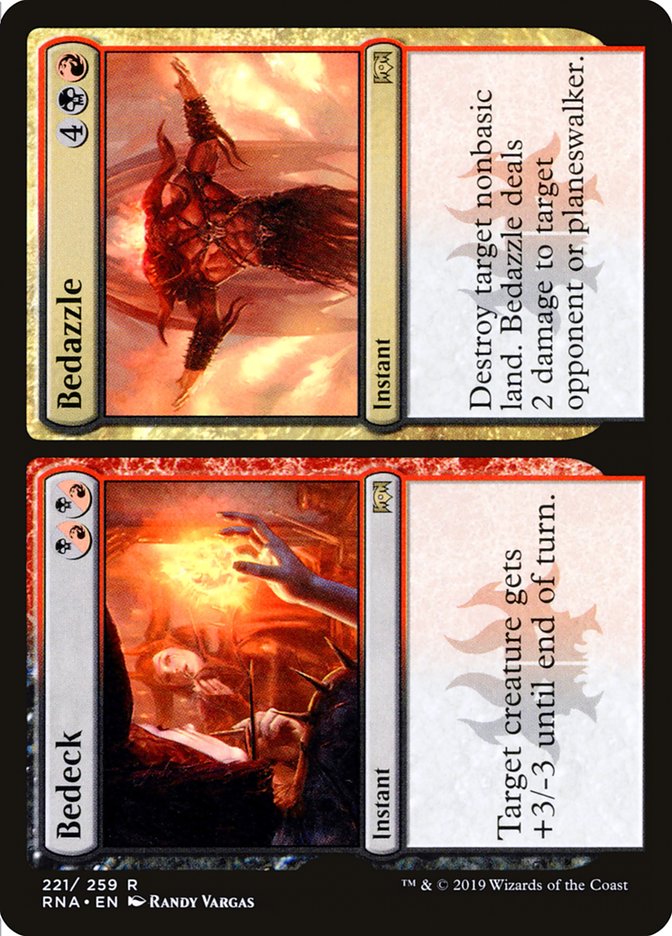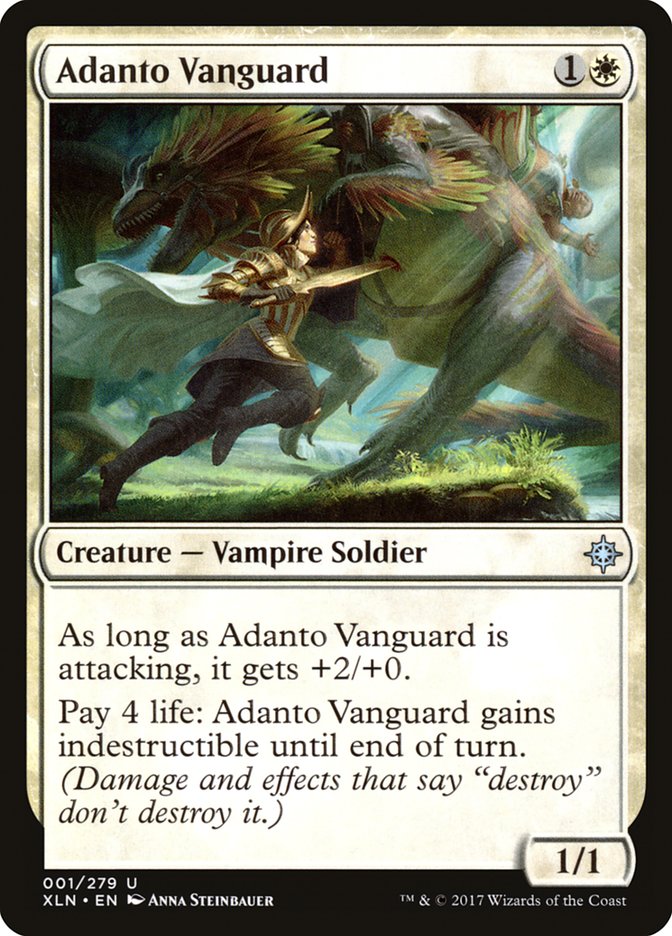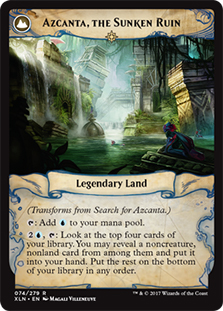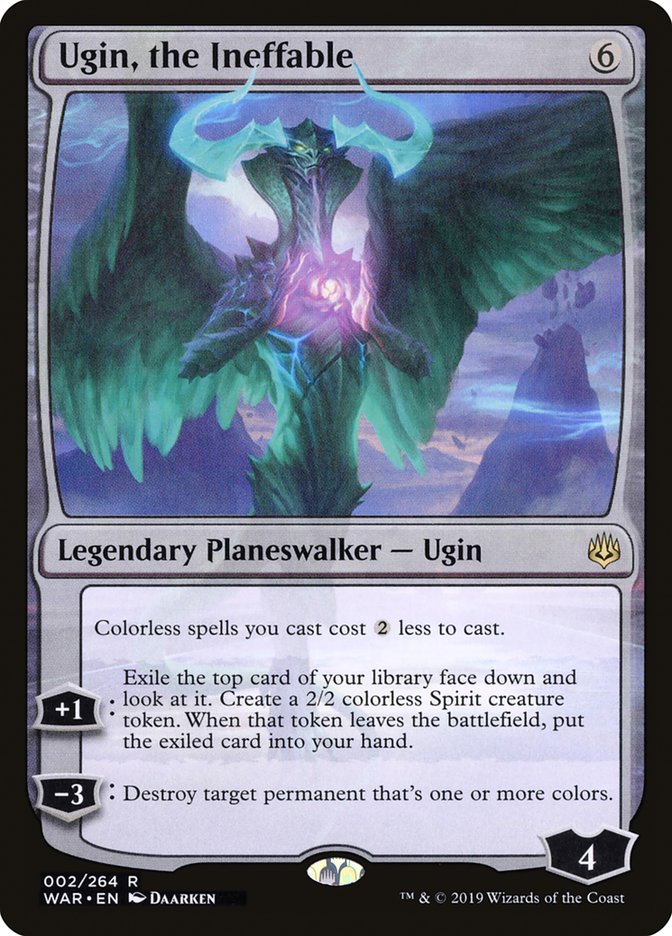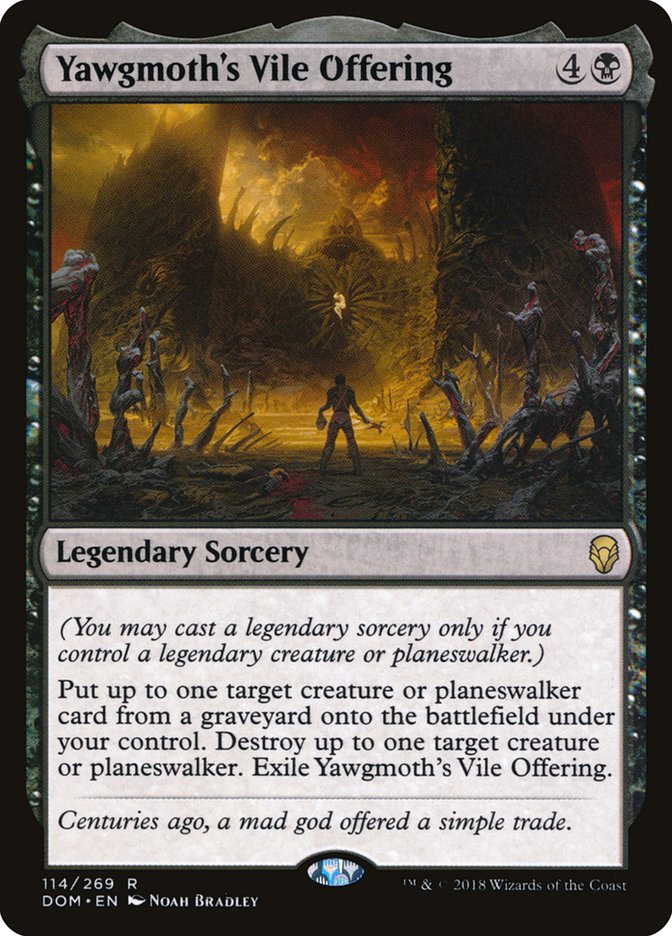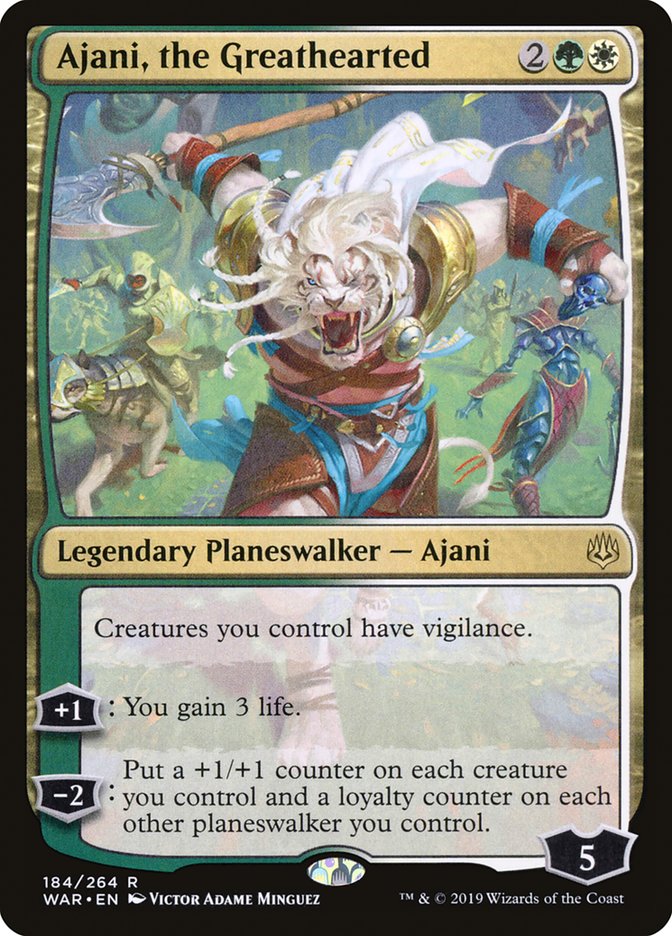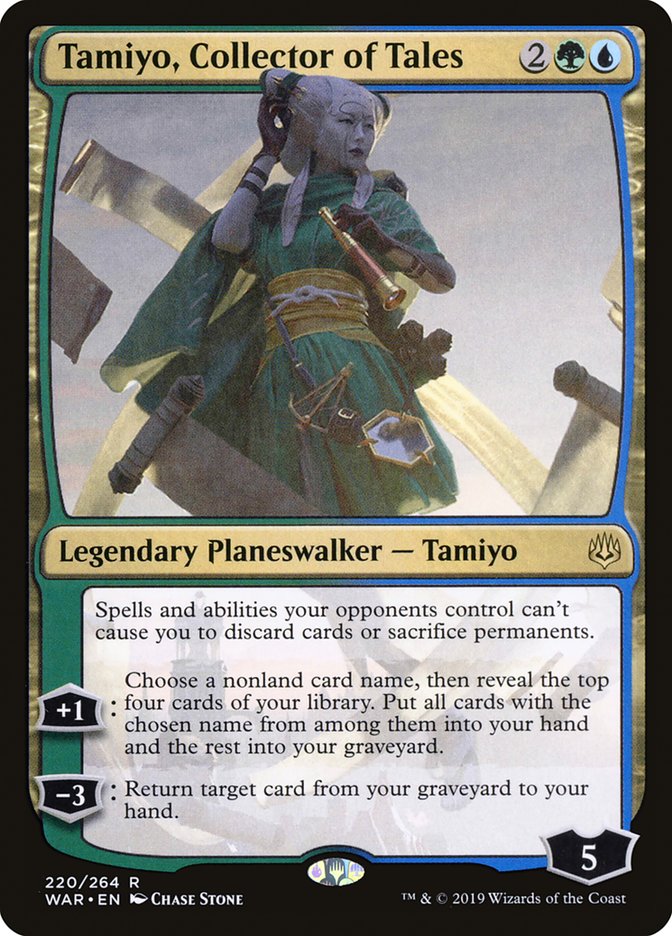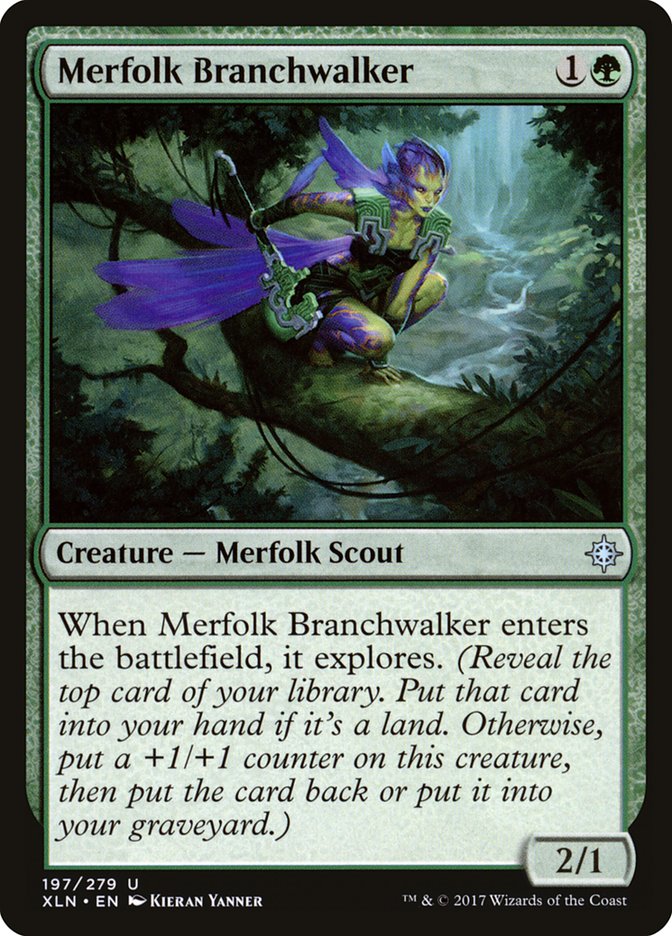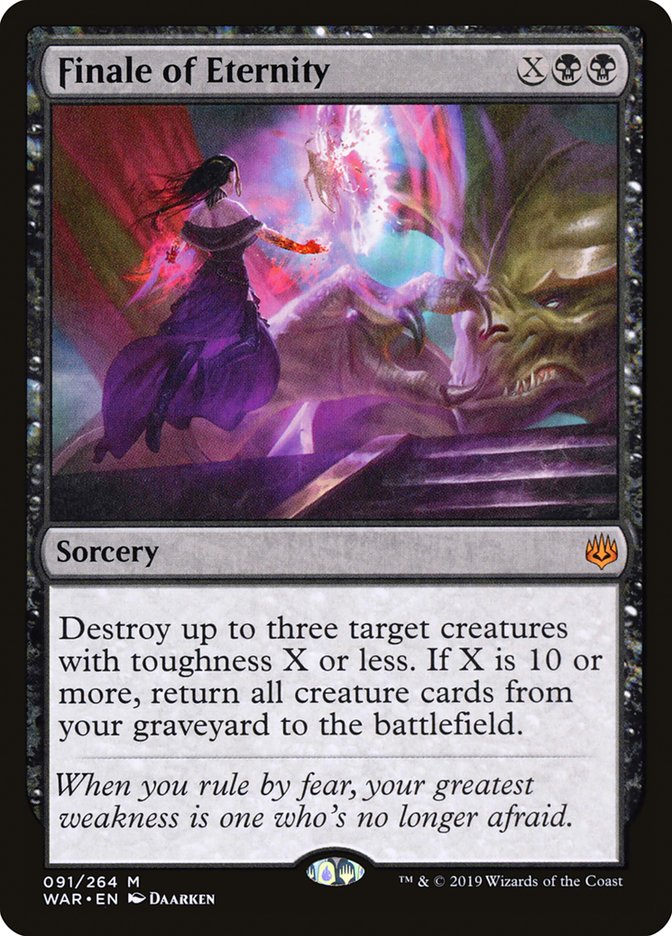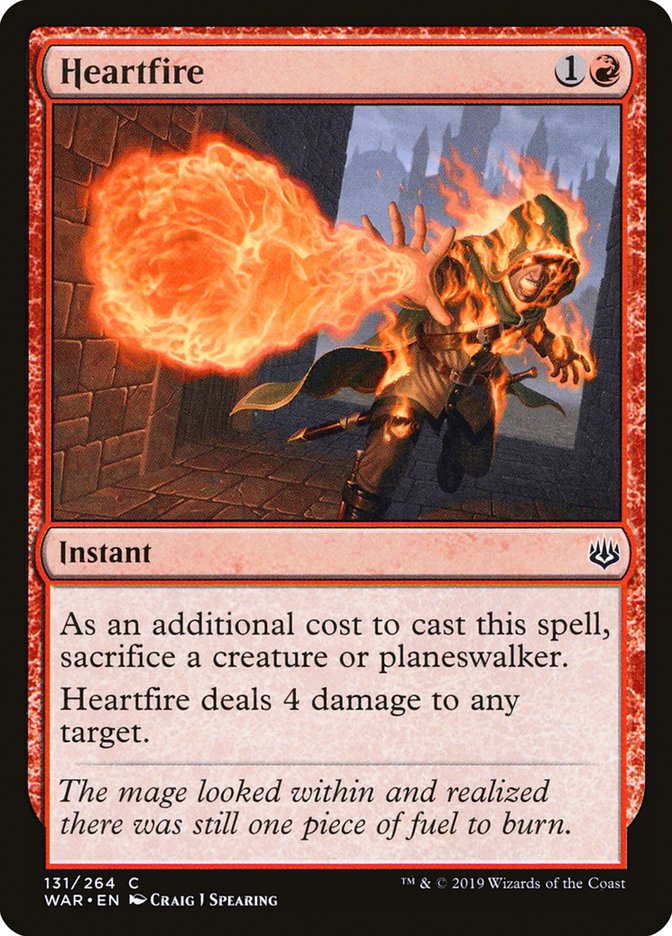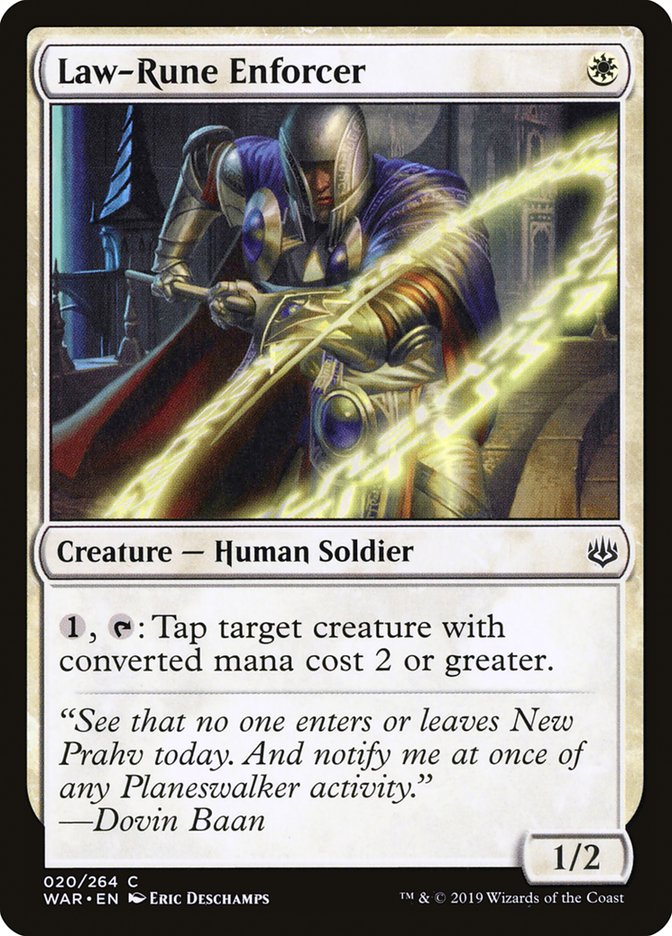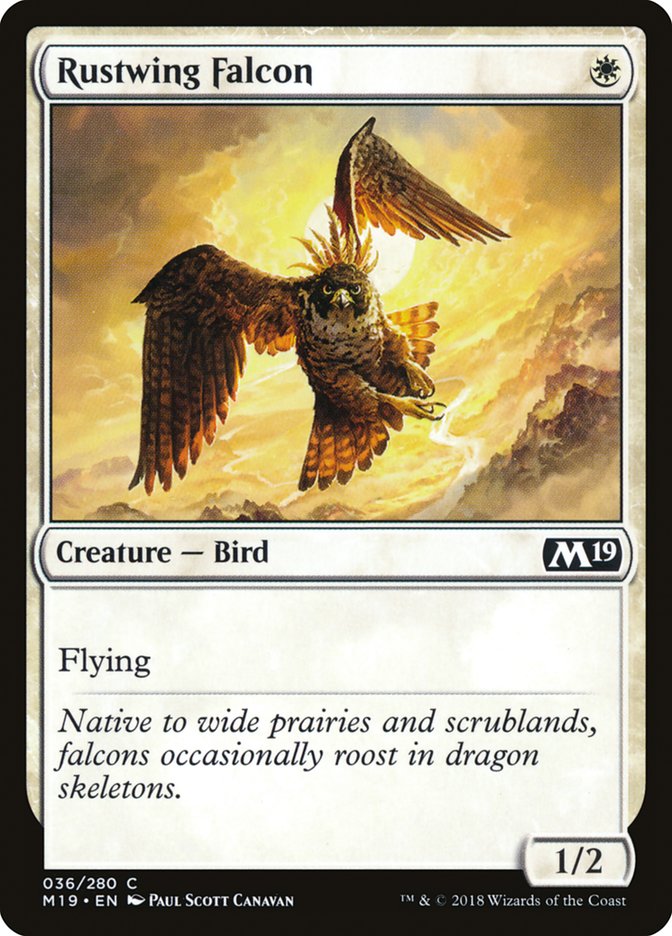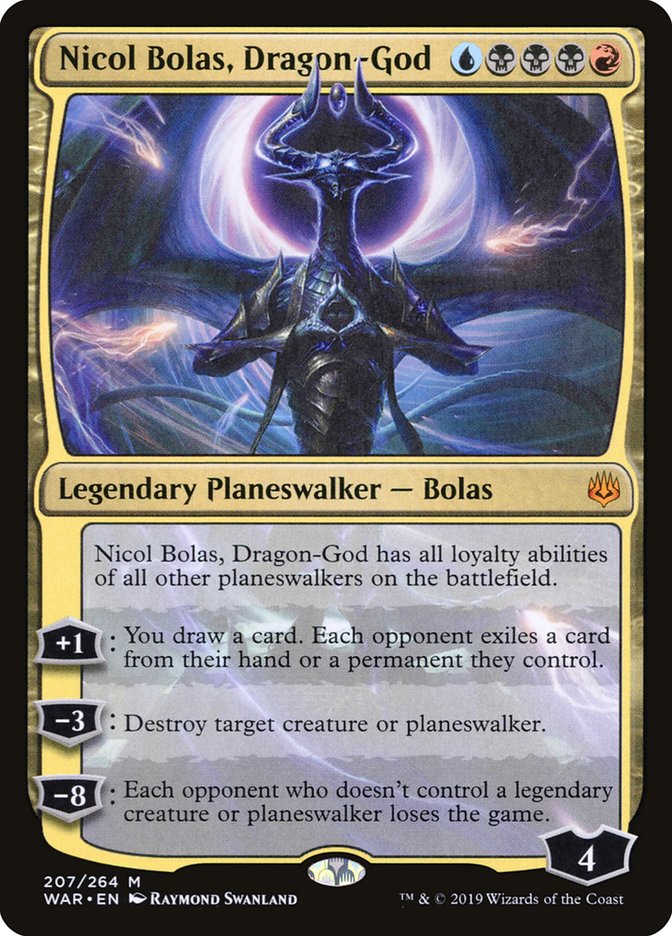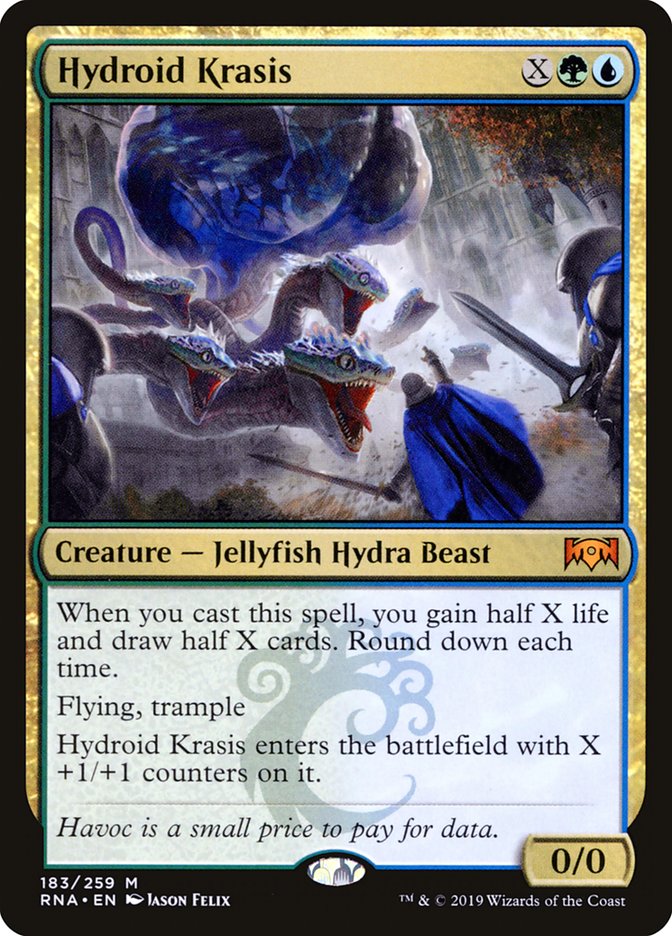War of the Spark is the beginning of a new age in Magic. I really think, years from now, when we look back at Magic’s history and evolving design philosophy, War of the Spark is going to stand out as a truly defining moment, the beginning of a new era.
One of the radical experiments taking place in War of the Spark is a rise in the overall number of pushed cards. This may seem like power creep on the surface; but that’s only a short-term experience. Really, what’s being attempted is a reimagining of the distribution of power in the set. Historically, Magic card strength has fallen in somewhat a normal distribution (at least since Urza’s Saga).
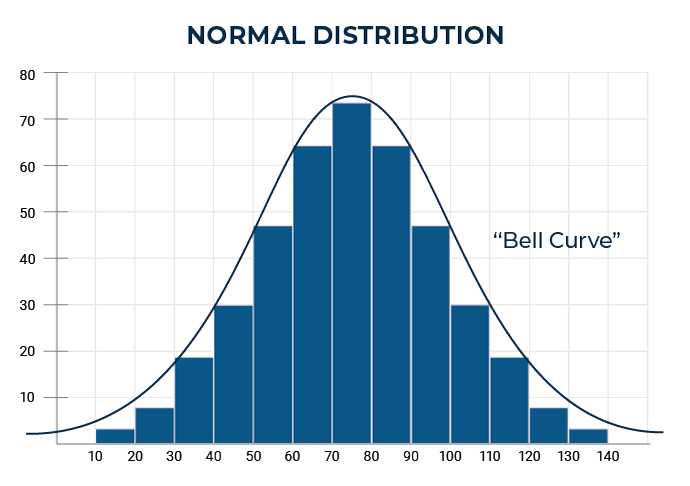
Most of the cards fall in the middle, and the overall number of “strong” cards is largely a function of how many cards are in the format total. Since most of the cards “strong enough for high level competitive play” are well above average in card strength, this can have some interesting consequences when viewed in the context of just the cards people actually play competitively.
Let’s imagine in the above graph that 100 is the cutoff point for competitive play. The bar for 100-110 contains a lot more cards than 110-120, which contains a lot more than 120-130, which has a lot more cards than 130-140. Additionally, there could be occasional outliers in the 140+ range (the pointing here is an arbitrary quantification of power level).
If we only view the section containing cards seeing play, we see most of the cards are in the bottom half of the range. This leads to a format really heavily warped around the power cards (with most other cards filling a supporting role).
War of the Spark would appear to be the beginning of a new approach, a great experiment with a bimodal distribution of power.
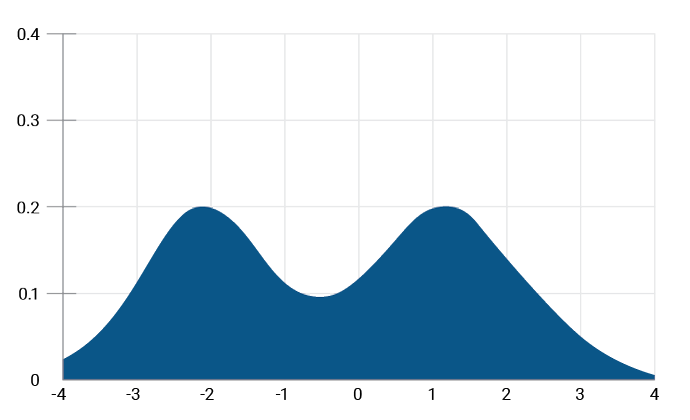
The idea here is to actually compress the middle and move the peaks out further away, so that the distribution of cards people actually play competitively actually has its own normal distribution. The hope here, I would guess, is that formats will be warped around only a couple of cards less often, and that there will be a lot more variety in the normal cases, rather than most of the variety coming from the fringes.
It’s a bold move, not necessarily easy to execute, but if well done, it makes a lot of sense (at least to me) and may actually be downright brilliant. If War of the Spark is any indication of things to come, I have to say, they are doing a really great job of executing of this approach. I know it might seem like War of the Spark is “power-creeped,” but remember, people have thought that many times. For instance, it took Magic almost a decade to make creatures “not terrible,” and then it took almost another five years to make them actively great. The key here is redistributing where the power is located, not just adding power. The “power” is all relative.
What is the relative value of a 1/1? A 2/2? A +1/+1 counter? Flying? A mana? A damage? A loyalty?
This last one is an important component of what would seem to be a desire to generally slightly increase the quantity of stats on the table, without necessarily speeding up or slowing down the format. When there are more stats on the table, you can have planeswalkers with more loyalty. When one player is attacking or considering attacking a planeswalker that may live through the attack, but have options for how it is used impacted, that is some of the richest depth of gameplay. It’s a challenging balancing act, but a noble one.
A lot of time gets spent talking about cards like Nicol Bolas, Dragon-God; God-Eternal Oketra; and Teferi, Time Raveler. Today, I’d like to take some time to dive a little deeper into some of that right hump, rather than just the extreme outliers. This bimodal power distribution implies a greater depth of exploration of quality cards in the middle of the “high playable” range.
8. Bedeck // Bedazzle
Bedeck // Bedazzle is an unassuming two-cost removal spell that isn’t usually one of the first couple people think of for solving their problems, yet appears to actually be pretty well-positioned in the format. At a baseline, it’s sort of a Lighting Strike that only hits creatures; however, it has other important differences.
For starters, +3/-3 means it can kill even indestructible threats like Adanto Vanguard, or anything under an Unbreakable Formation. The power bonus is harder to take advantage of but can do a passable impression of face damage at times, assuming you’re playing four-toughness creatures. In theory, you could get extra mileage out of any creature with double strike or lifelink, like God-Eternal Oketra.
The other upside to Bedeck is that when the game goes long, you can turn it into Bedazzle. Bedazzle isn’t that efficient of a mode, but if the game is stretching out anyway, it’s frequently going to be better than Lightning Strike to the face would be anyway. You’re still getting two of the three damage, but hitting nonbasic land is more valuable than just keeping down opposing resources. It can be a much-needed escape plan for getting out from under an Azcanta, the Sunken Ruin.
Notably, it’s also an instant-speed form of mana disruption, so it can be used by surprise to combat an opponent attempting to leave exactly Absorb mana up, or whatever. Even if they counter it, you can then untap and cast your real threat.
Creatures (4)
Planeswalkers (9)
- 2 Liliana, Dreadhorde General
- 4 Nicol Bolas, Dragon-God
- 2 Narset, Parter of Veils
- 1 Ugin, the Ineffable
Lands (25)
Spells (22)

SCG Richmond’s Standard Classic was won by Chris Johnson and his more planeswalker-centric build of Grixis Control. Bedeck // Bedazzle replaces Tyrant’s Scorn, which is a move I’m definitely into. Without Augur of Bolas to reset, the bounce ability of Tyrant’s Scorn just doesn’t add as much as it used to. Besides, we really need answers to Search for Azcanta, and after sideboarding, we want answers to Thief of Sanity that can still be used to good effect against control decks that don’t draw it.
7. Ugin, the Ineffable
Ugin, the Ineffable is another underappreciated War of the Spark card that I think people are only starting to understand. While it has been showing up since Day 1, this week saw a radical shift towards maindeck Ugins, rather than as an occasional sideboard option. I would guess this is a trend that not only continues but starts to branch into players playing multiple Ugins. The ability to drop an Ugin and kill an opposing planeswalker (besides Ugin or Karn) and still have a powerful planeswalker is a valuable one.
6. Yawgmoth’s Vile Offering
Similar to Ugin, Yawgmoth’s Vile Offering features the ability to kill an opposing planeswalker while leaving us with one. It has long lived in The Eldest Reborn’s shadow, despite having more immediate impact. The limiting factor has always been needing a planeswalker or legend to get the party started.
Creatures (8)
Planeswalkers (10)
- 1 Angrath, the Flame-Chained
- 1 Dovin, Hand of Control
- 3 Liliana, Dreadhorde General
- 3 Nicol Bolas, Dragon-God
- 2 Narset, Parter of Veils
Lands (25)
Spells (17)

Enter War of the Spark, and along with it an outrageous uptick in good planeswalkers and legends, plus support for heavy planeswalker/legend decks. Competition for five-drops is fierce, but I could see Yawgmoth’s Vile Offering increasing in popularity in response to the recent trend towards SuperFriends-style decks.
5. Ajani, the Greathearted
Interestingly, Ajani, the Greathearted has mostly been relegated to SuperFriends strategies, and in this case, I think its use should be opened up a little. It has a powerful enough impact on the game that more people should really be using it as an enabler for creature-heavy decks, whether token-centric or not. For instance, consider Peter Sottile’s Selesnya Angels list:
Creatures (27)
- 4 Llanowar Elves
- 4 Wildgrowth Walker
- 4 Merfolk Branchwalker
- 4 Jadelight Ranger
- 2 Lyra Dawnbringer
- 2 Shalai, Voice of Plenty
- 3 Resplendent Angel
- 2 Knight of Autumn
- 2 God-Eternal Oketra
Planeswalkers (4)
Lands (22)
Spells (7)

It’s not like his list is actually that planeswalker-centric or anything. However, it definitely appreciates +1/+1 to its team two turns in a row, and the offense/defense options afforded to us from vigilance, combined with the +3 life a turn, are backbreaking against red. It’s not like they have a lot of answers to six-loyalty planeswalkers anyway. You’ll have to go after Tibalt, but you’ve got lots of threats and +1/+1 counters to make that happen.
4. Tamiyo, Collector of Tales
Like Ugin, it’s not that Tamiyo isn’t seeing play. Rather, she’s just been primarily hanging out in Nexus of Fate decks when she actually should be showing up a lot more places. For instance, I’m super-interested in experimenting with her in Sultai, like William Ruifrok:
Creatures (23)
- 4 Llanowar Elves
- 3 Hostage Taker
- 4 Wildgrowth Walker
- 4 Merfolk Branchwalker
- 4 Jadelight Ranger
- 4 Hydroid Krasis
Planeswalkers (5)
Lands (24)
Spells (8)
Sideboard

You gotta be careful about playing too many fours, but trimming a Vivien Reid to help make room is a step in the right direction. Here, she has a fair number of tactical implications, besides generally just finding stuff you want to regrow or digging for what you need.
For starters, if you explore and keep, you sure do increase the chances of being able to guess correctly with Tamiyo. Doing so with Memorial of Folly takes a lot of mana but is possible, too. Besides, the more you dig with Tamiyo, the more fuel you’ll have for making Memorial to Folly and Find // Finality juicy.
3. Finale of Eternity
Speaking of juicy, Finale of Eternity is quite the juicy sideboard card for grindy matchups. If you need to use it early, it’s efficient for fighting Hostage Taker battles. If the game goes long (which Sultai mirrors are definitely prone to), it turns into an absolutely monumental gamebreaker. It doesn’t work with Hydroid Krasis, but it sure does work with everything else (especially Tamiyo).
2. Heartfire
Similar to Bedeck // Bedazzle, Heartfire is another two-cost removal option that has largely been overlooked with people so focused on Lightning Strike, Lava Coil, and Reckless Rage. Obviously you can’t just play it anywhere, but if you are specifically in the market for sacrificing your creatures, Heartfire is a reasonably efficient way to do so.
Creatures (29)
- 2 Midnight Reaper
- 4 Tithe Taker
- 4 Judith, the Scourge Diva
- 2 Gutterbones
- 3 Fireblade Artist
- 4 Footlight Fiend
- 4 Cruel Celebrant
- 4 Dreadhorde Butcher
- 2 Grim Initiate
Planeswalkers (2)
Lands (22)
Spells (7)
Sideboard

Dreadhorde Butcher already increases the incentive to re-examine Judith decks, and Heartfire can play an important supporting role. It’s not quite as powerful of a card in the abstract as Lava Coil; however, the added flexibility and synergy is worth the price of admission when we’re building around Grim Initiate, Gutterbones, and Footlight Fiend.
Speaking of one-drops…
1. Law-Rune Enforcer
Here’s a surprising newcomer that warrants further testing after Gavin Wen’s impressive showing this past weekend:
Creatures (26)
- 2 Adanto Vanguard
- 4 Skymarcher Aspirant
- 4 Benalish Marshal
- 4 Dauntless Bodyguard
- 4 Venerated Loxodon
- 4 Tithe Taker
- 4 Law-Rune Enforcer
Planeswalkers (3)
Lands (20)
Spells (11)

The second point of toughness is a big deal for reducing our exposure to Goblin Chainwhirler, of course, but the tap ability is also big. It’s not like we actually care about tapping one-drops much anyway. Now we have built-in answers to Nicol Bolas, the Ravager; God-Eternal Kefnet; Wildgrowth Walkers; and more. Spending two to tap something may not seem like the best deal in the world, but the opportunity cost is just so low. What are we sacrificing? The ability to have our 1/2 have flying?
When we actually take advantage of the ability, we’ll frequently get more than two mana worth of value. Besides, it’s not like we’re long on ways to spend our mana profitably late, anyway.
Yeah, War of the Spark Standard still has a top tier of defining cards that are the largest influences shaping the landscape, but we’re at the dawn of a new era of depth for role-players. There’ll always be edge for those ahead of the curve on technology, but this is especially true in this transitional period before the metagame as a whole has had a chance to adapt to this new balance of power.


